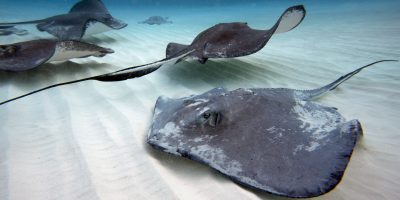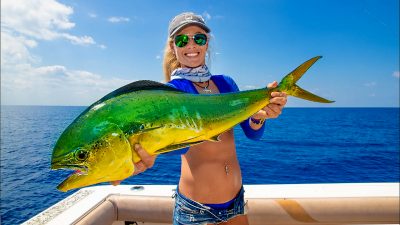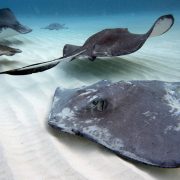Trunkfish are cute, just ask any diver or snorkeler who has been to the Caribbean islands. This species belong to the Tetraodontiformes from the family Ostraciidae. This family contains many species of four main types of fish: boxfishes, cofferfishes, cowfishes, and trunkfishes.
Boxfish is another common term for these species. These fish do not share territory with the same species, but they do with other non aggressive fish. The main defense they have against predators is a poisonous secretion produced in the skin. Its toxin is only dangerous if ingested, it does not harm divers.
Photo Gallery
morphology
Trunkfish colors vary widely from one species to another. Their colors include gray, red, black, yellow, brown. Some are spotted or splotched. They grow between 8-20 inches, always growing bigger in the wild than in captivity. They have a hard outer covering that consists of hexagonal scales (plates) fused together like a solid caparace.
On Video
Habitat & Range
The spotted ones can be found in the Caribbean Sea, the lower South of the Gulf of Mexico, Ascension Island and the Northeastern Coast of South America as far as Brazil.
This is a clear water fish that thrives in coral reef fissures, holes and overhangs at depths down to 30 m (100 ft). Local divers and snorkelers often encounter this fish in the Dominican Republic North Coast, including areas near Costambar Beach.
Feeding & Mating
Trunkfishes are omnivorous feeders, and their diet consists mainly of small invertebrates, crustaceans, shrimps, mollusks, sea urchins, starfish, sea cucumber, tunicates, seagrasses and worms. They reproduce by pairs laying eggs at dusk, and its life cycle involves an egg, larva, juvenile and adult stage.
More Sources:















